I have a video of simple moving dots (that sometimes overlap) that is saved as a sequence of images. At each image I detect all the dots and save their coordinates:
(snapshot 1 -> snapshot 2)
I would like to infer the trajectory of each dot. The dots move smoothly and not too fast from one frame to the other, but if for each point of the first image I just find their closest point of the next image it often fails to reconstruct the trajectory.
I tried on opencv the multitrackers but the trackers very quickly lose their target by jumping on a different dot when the dots tend to overlap. The detection works very nicely though.
The video and the objects to track are simple. I do not want to believe that I need to implement something more technical to accurately track these dots. Which is why I decided to ask here, I am out of ideas. Any tip or advice is appreciated... Thanks.

